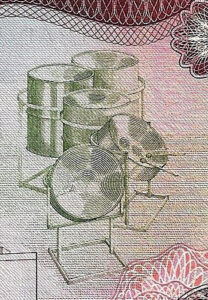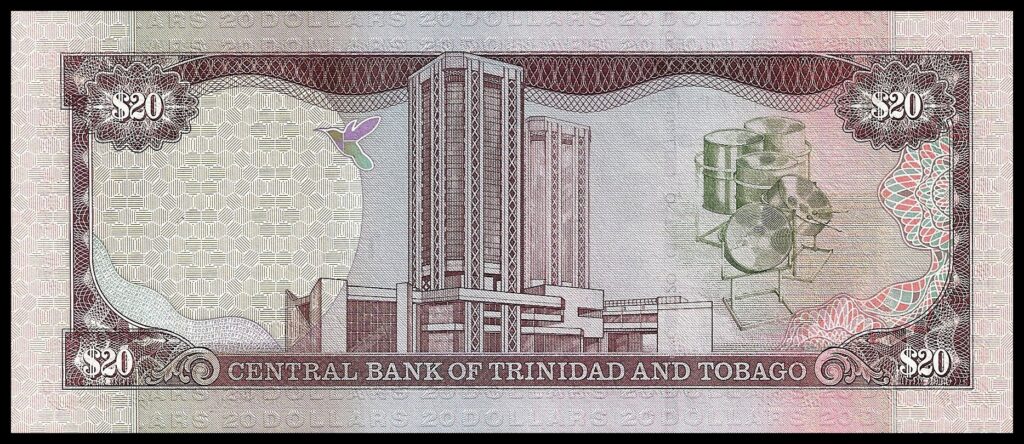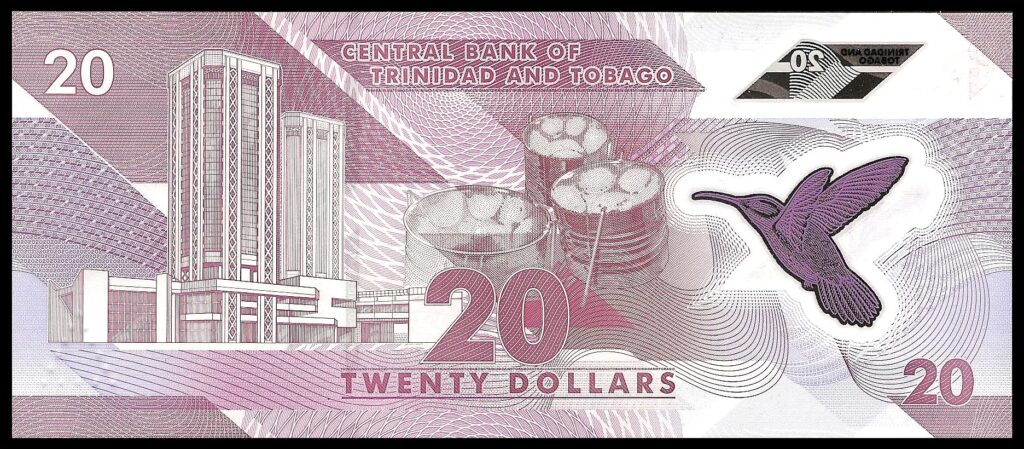COUNTRY
Trinidad & Tobago
The Steelpan Drum: National Instrument of Trinidad & Tobago
The steel drum, or Pan as it is locally known, was born in the junkyards of Trinidad in the 1930’s due to laws restricting the use of drums during the celebratory street processions called Canboulay, a harvest festival similar to Carnival.
Trinidad banned slavery in 1834 but, as was often the case when slavery ended in colonies and elsewhere, there were still restrictions on activities that were allowed for those who were recently liberated. There were already laws banning the former slaves from participating in religious festivals originating from European shores, and Canboulay was their own unique celebration where the participants would hide their faces behind masks, play djembe-type skin drums and set fire to the effigies of the crops that had been for too long, and was still, a symbol of their suffering and abuse. This was of course seen as by the elite landowners as a precursor to revolt against their authority and status, causing a strong desire to quench the fires of revolt before they started.

Prohibiting the Canboulay festival was not an option as such a harsh action would have likely caused immediate revolt, and indeed some attempts to stop individual parades were met with violence in 1881. Then in 1883 the ruling class enacted a law prohibiting what some thought was the heartbeat of the festival, the skin-drum. The innovative locals however were not to be without a percussive beat however. The locals invented the Tamboo-Bamboo from the large surplus of wild bamboo on the island. Using the hollow bamboo as a resonator, tapping and banging sections were replaced the skin-drums.
The Tamboo-Bamboo was used until 1934 when newer laws forbade even that. These new laws cited the desire to keep the public safe from street skirmishes between rival marchers, which was an issue, and also to clean up the marches of their suggestive and profane dances and songs which were an affront to the sensibilities of the upper classes in Trinidad. This did not stop the marches altogether, but it did put a quieter tone to the celebrations.
Different objects were sought out to make a new instrument to provide a percussive beat for the celebrations, and as luck would have it, new oil drilling and refinery was brought in to the island to aid in the war effort during the late 1930’s and 1940’s, which brought about an abundance of steel barrels. It was not long before it was noticed that an empty barrel could produce a nice sound.

As Trinidadians were largely poor, their resourcefulness in using discarded materials helped them to develop the new steel drum, or as they called it, the Pan. Cutting the drum sides to length created differing levels of resonance and tone. After using them for a while, the banging caused deformations in the steel-drum ends, and created different tones. This lead to experimentation and development in creating different tones by manipulating the drum ends as well as cutting the length of the sides.
A local named Ellie Mannette was the first person who developed the sunken head of the drum. In this, the barrel is turned upside down, as if to play, but it is hit repeatedly with such force all around the bottom end that the barrel bottom stretches and sinks into the barrel itself, giving the sunken shape of the drum to this day. Further refinement resulted in grooving specific sections to make isolated areas within the sunken end to have individual sounds, and with tempering the drum over a fire, they were made more durable, and less prone to splitting in the stretched metal drum-head.
The Pan Drum today is a result of continued developments made since then and often the drum heads are not from a steel drum itself, but are made of a more durable metal to fight against the splitting that was common with the original Pan Drum design. The sunken sections are made by marking the center of the plate then radial spokes are scribed to the edge at 10 degree intervals to aid in measuring for the individual notes. Repeated hammering of the drum head sinks it down to the required depth for the desired tone of the drum, and sections are drawn out for individual notes. These sections are then given a groove around them, isolating them from other notes so that they can ring without competition from adjacent sections. The smaller sections provide higher tones, and the larger ones are deeper tones. Further pounding out of these sections, and then pounding from the inside back up, help to develop the drums individual notes. Back and forth from one note to the other and then back again, the metal is pounded and checked against standardized tones for tuning. Annealing and more tuning are then performed until the drum is fully in tune and ready. On higher end drums they are chrome plated for protection against rust and, with a final tuning, they are ready.
Development of the drum head, length of the drum, and various tuning techniques have provided us soprano, alto, tenor and bass ranges with the distinctive sounds of the modern Pan Drum. Made from discarded barrels as a result of overbearing laws, the steelpan drum is now the traditional instrument of this island nation, featuring not only in the celebrations of Carnival, but in Caribbean music as a whole.
The Camboulay riots in 1881 and 1883 lead to large-scale resentment of British colonialism in Trinidad. The riots are well remembered in Trinidad and Tobago and are celebrated with the Camboulay celebration which immediately precedes the modern Carnival. This not only commemorates the original Camboulay celebrations of ending slavery, but also re-enacts the 1881 riots that were a result of colonial efforts to stop those celebrations.
The Steelpan Drum has been commemorated on coins and banknotes of Trinidad and Tobago with a 50 cent coin showing a set of steelpans on the reverse and the 20 Dollar banknote having a set of Steelpans adorning the back of the banknote.



